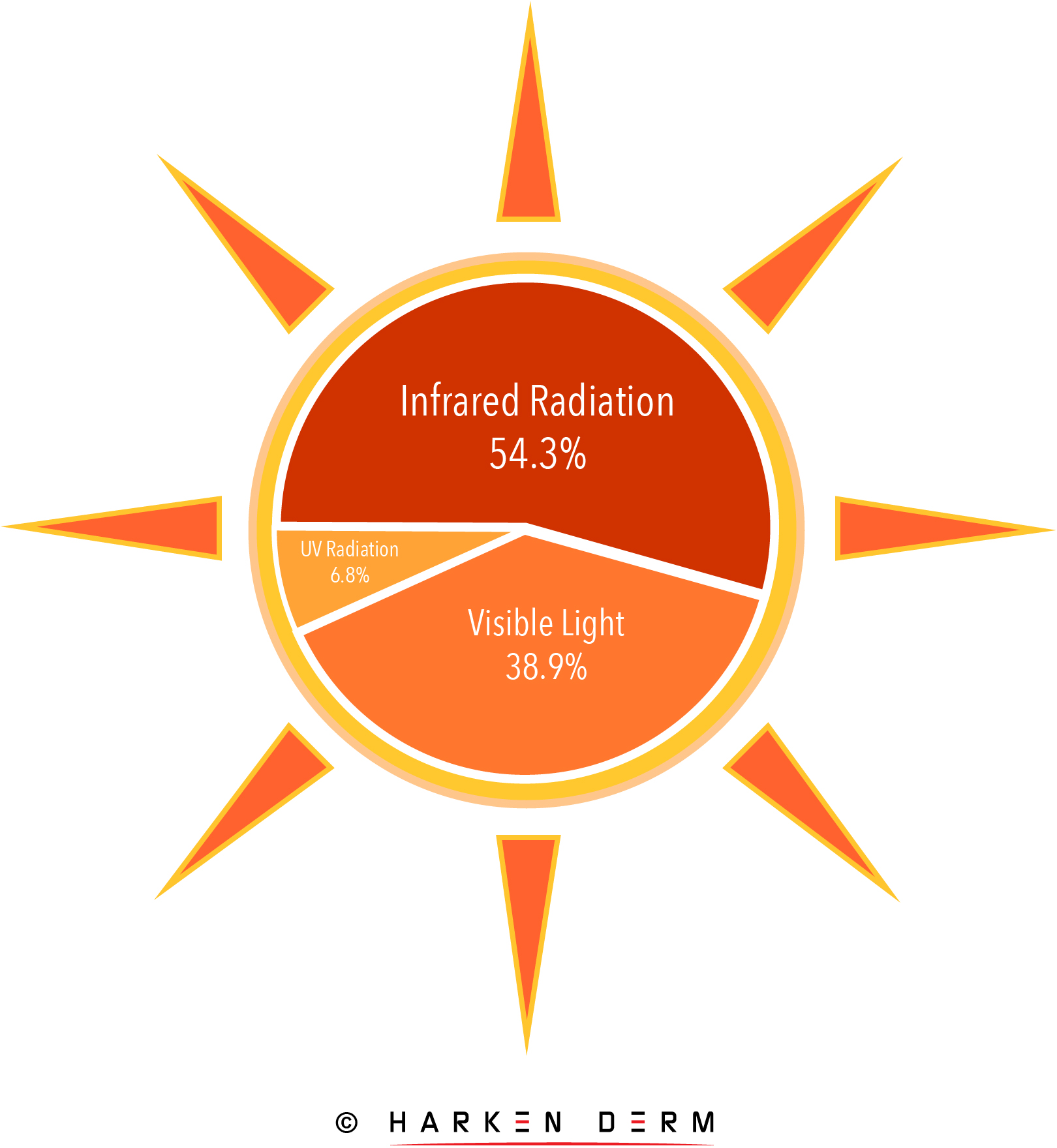Understanding the Sun - An Overview
The Sun: Earth’s Fuel, Skin’s Grill
The Earth receives almost all of its energy from the sun.
Every day, energy travels from the sun to the Earth in the form of solar radiation.
What is sunlight made up of?
Three bands of solar radiation make up sunlight:
Infrared Radiation
Visible Light
Ultraviolet Radiation
Keeping things in perspective
Infrared Radiation makes up the majority of solar radiation: 54.3%
Visible light makes up 38.9% of solar radiation, and
Ultraviolet radiation is only 6.8% of total solar radiation.
How is light measured?
Light is measured in wavelengths, from nanometers (nm) to meters (m).
Sunlight is made up of a spectrum of rays, each with a distinct wavelength.
Shorter wavelengths have higher energy, and
Longer wavelengths have lower energy.
Infrared Radiation
Most of the sun’s energy is Infrared Radiation.
We cannot see waves of infrared radiation, but we feel it as heat.
Infrared radiation has the longest wavelength (760 nm - 1 mm) and is made up of IR-A, IR-B, and IR-C.
Until recently, we have been studying Infrared Radiation purely in terms of heat energy, largely ignoring the important question: what role does this vast amount of solar radiation play in skin damage and photoaging?
Visible Light
Visible light is the only band of solar radiation we can see.
It ranges from 400-760 nm, from a spectrum of purple (highest energy) to red (lowest energy).
High Energy Visible Light (HEVL) is in the purple/blue range, from about 400-500 nm.
Ultraviolet Radiation
Ultraviolet Radiation makes up only 6.8% of total solar radiation.
It has the shortest wavelength and highest energy, which is why we see its immediate effects on our skin.
It is made up of UV-C, UV-B, and UV-A (shortest to longest wavelength).
UVC is absorbed by the atmosphere. If it were not, Earth would not be habitable for humans.
UVB is mostly absorbed by the atmosphere, but the 5% that does reach us burns our skin.
UVA makes up 95% of UV Radiation and are the long-range rays responsible for aging.
Solar Radiation - Effects on Our Skin
Infrared Radiation
Infrared rays are the longest and most plentiful, and in fact, penetrate the skin the deepest.
Infrared rays pass through the epidermis and dermis, penetrating deep into the subcutis, causing the most lasting damage.
Infrared rays (made up of IR-A, IR-B, and IR-C) induce the formation of free radicals and attack the mitochondria, increasing the production of MMP enzymes responsible for collagen destruction and apoptosis (cell death), as well as slow epidermal renewal.
Visible Light
Visible light travels through the epidermis to the dermis, and recently, HEVL has come under scrutiny for potentially causing weakened barrier function and photoaging.
Ultraviolet Radiation
Ultraviolet Radiation has been widely studied, and its effects on the skin are well-known.
UVA rays are not blocked by clouds or glass. They penetrate the epidermis, chopping up collagen in the dermis, leading to photoaging and some skin cancers.
UVB rays vary by season and time of day, and makes up only 0.38% of total solar radiation. It is a short-range ray that burns the top layer of the skin.




